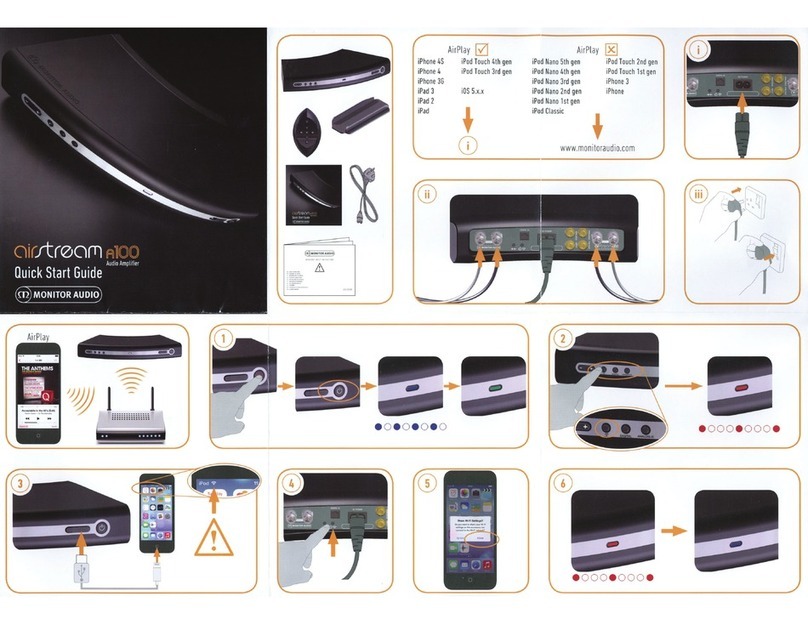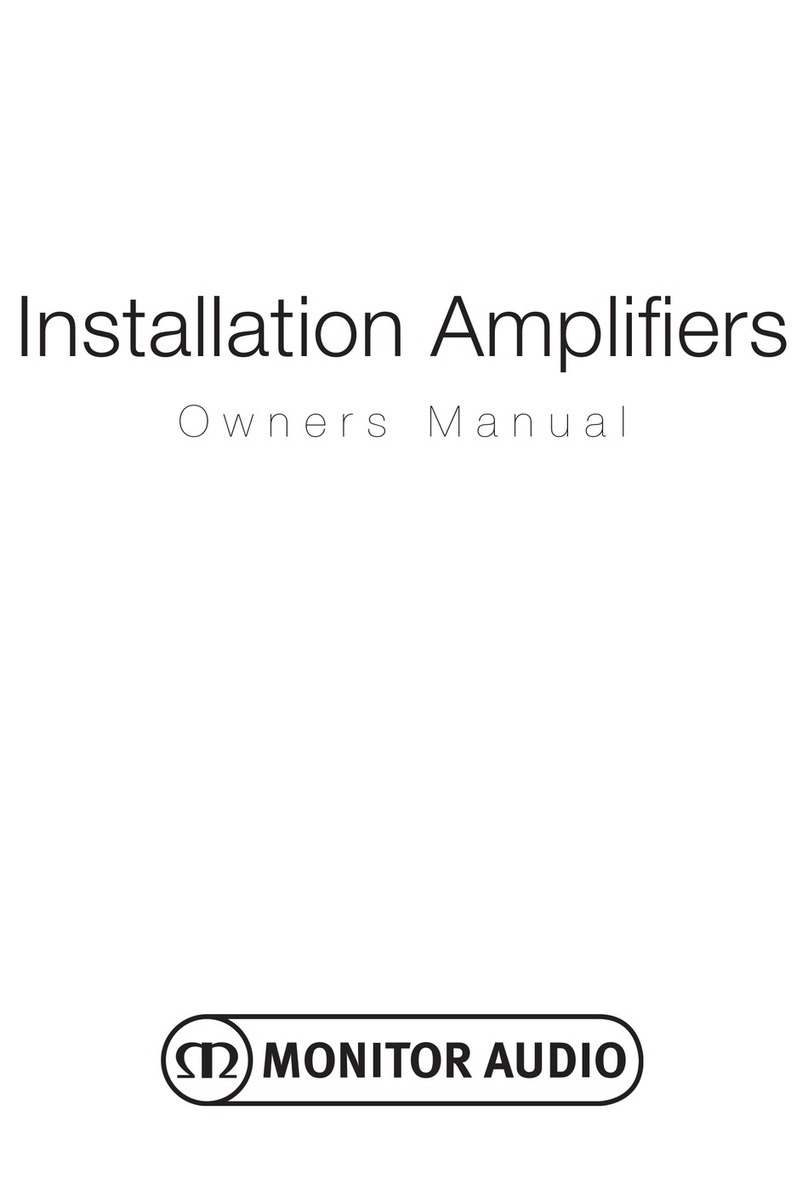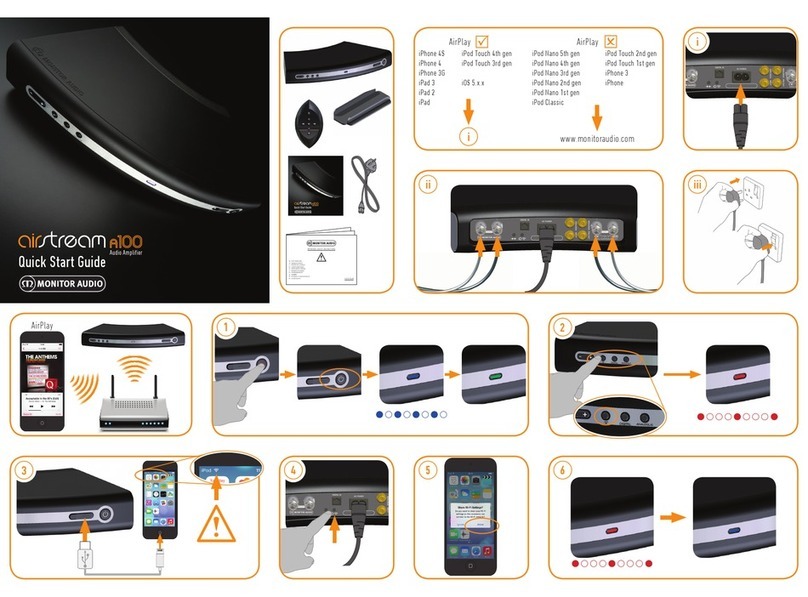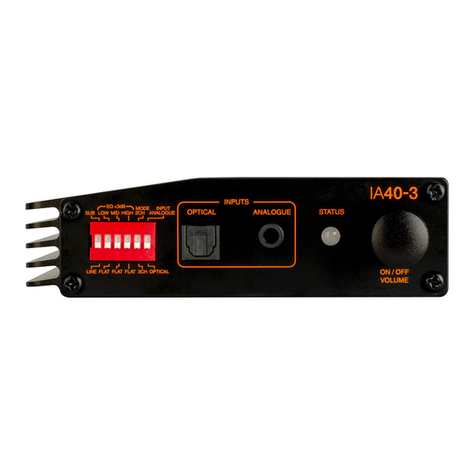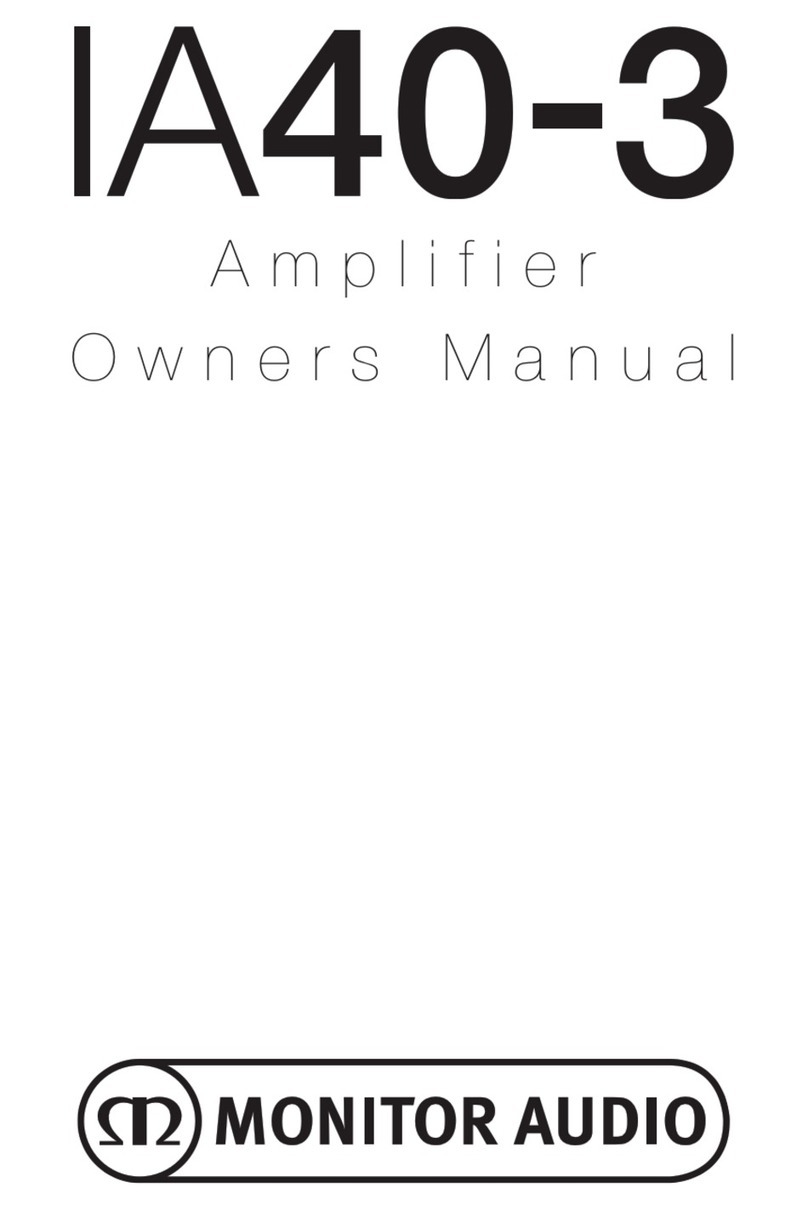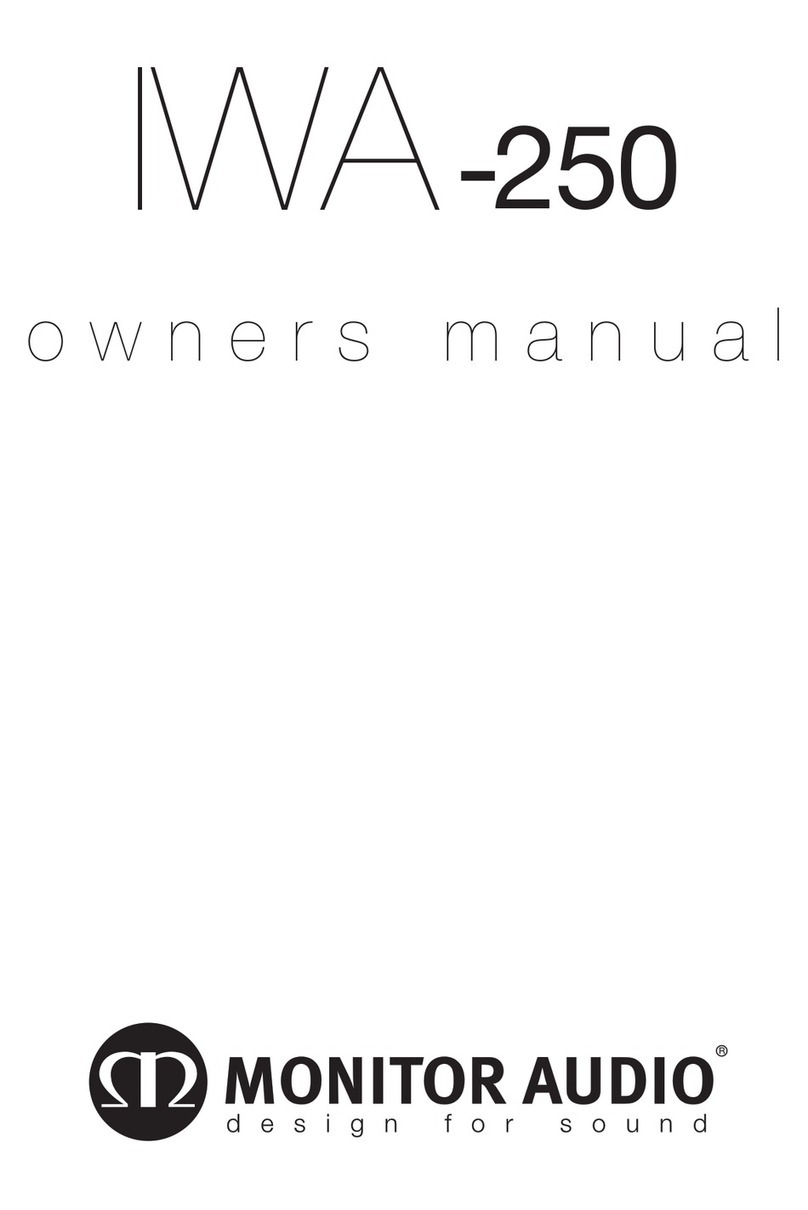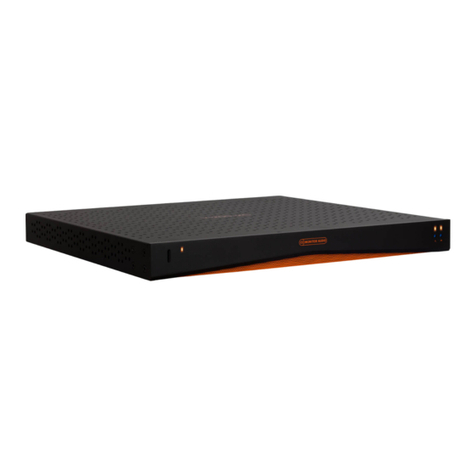
This equipment must be earthed.
RISQUE DE CHOC
ELECTRIQUE
NE PAS OUVRIR
RISK OF ELECTRIC SHOCK
DO NOT OPEN
AVIS CAUTION
This symbol is intended to
alert the user to the presence
of uninsulated “dangerous
voltage” within the product’s
enclosure that may be of
sufcient magnitude to
constitute a risk of electric
shock to persons.
This symbol is intended to
alert the user to the presence
of important operating and
maintenance (servicing)
instructions in the literature
accompanying the
appliance.
Ce symbole a pour but d’attirer l’attention de l’utilisateur sur la
présence, à l’intérieur du boîtier de l’appareil, d’une « tension
dangereuse » non isolée, qui pourrait être sufsamment puissante
pour représenter un risque d’électrocution pour les personnes.
Ce symbole a pour but d’attirer l’attention de l’utilisateur sur la
présence, dans la documentation qui accompagne l’appareil,
d’instructions importantes relatives à son utilisation et sa
maintenance (entretien).
Important saftey instructions
FCC compliance
Consignes de sécurité importantes
1. Read these instructions.
2. Keep these instructions.
3. Heed all warnings.
4. Follow all instructions.
5. Do not use this apparatus near water.
6. Clean only with a dry cloth.
7. Do not block any ventilation opening. Install in accordance with
the manufacturer’s instructions.
8. Do not install near any heat sources such as radiators, heat
registers, stoves, or other apparatus (including ampliers) that
produce heat.
9. To reduce the risk of electrical shock, the power cord shall be
connected to a mains socket outlet with a protective earthing
connection.
10. Do not defeat the safety purpose of the polarized or grounding
type plug. A polarized plug has two blades with one wider
than the other. A grounding type plug has two blades and
a third grounding prong. The wide blade or the third prong
are provided for your safety. If the provided plug does not t
into your outlet, consult an electrician for replacement of the
obsolete outlet.
11. Protect the power cord from being walked on or pinched
particularly at plugs, convenience receptacles, and the point
where they exit from the apparatus.
12. Do not unplug the unit by pulling on the cord, use the plug.
13. Unplug this apparatus during lightning storms or when unused
for long periods of time.
14. Refer all servicing to qualied service personnel. Servicing is
required when the apparatus has been damaged in any way,
such as power supply cord or plug is damaged, liquid has been
spilled or objects have fallen into the apparatus, the apparatus
has been exposed to rain or moisture, does not operate
normally, or has been dropped.
15. The appliance coupler, or the AC Mains plug, is the AC mains
disconnect device and shall remain readily accessible after
installation.
1. Veuillez lire ces instructions.
2. Conservez ces instructions.
3. Respectez tous les avertissements.
4. Suivez toutes les instructions.
5. N’utilisez pas cet appareil près de l’eau.
6. Nettoyez uniquement avec un chiffon sec.
7. N’obstruez pas les ouïes de ventilation. Installez l’appareil en
respectant les instructions du fabricant.
8. Éloignez l’appareil des sources de chaleur : radiateurs, bouches
de soufage, fours et autres (y compris les amplicateurs).
9. Pour réduire le risque d’électrocution, le cordon d’alimentation
doit être connecté à une prise de courant avec une mise à la
terre de protection.
10. Respectez le dispositif de protection de mise à la terre de la
prise secteur. Une prise polarisée est équipée de deux ches,
l’une plus large que l’autre. Une prise avec borne de terre est
équipée de deux ches et d’une borne de terre. La che large,
ou la borne de terre, est garante de votre sécurité. Si la che
secteur fournie avec l’appareil ne correspond pas à la prise
secteur de votre installation, faites remplacer cette dernière par
un électricien.
11. Disposez les câbles de sorte qu’ils ne puissent pas être piétinés,
coincés ou pincés ; une attention toute particulière doit être
accordée au niveau des prises secteur et de l’embase secteur
de l’appareil.
12. Ne débranchez pas l’appareil en tirant sur le cordon.
Utilisez la che.
13. Débranchez cet appareil du secteur lors des orages ou des
longues périodes d’inutilisation.
14. Conez toute réparation à un technicien qualié. L’intervention
d’un technicien est nécessaire dans les cas suivants : le cordon
d’alimentation ou la prise secteur sont endommagés, des
corps étrangers ou du liquide se sont introduits dans l’appareil,
l’appareil a été exposé à la pluie ou à l’humidité, l’appareil
montre des signes de dysfonctionnement ou est tombé.
15. Le coupleur de l’appareil, ou la che secteur, est le dispositif de
déconnexion du secteur et doit rester facilement accessible
après l’installation.
Class 2 Wiring
Exposed high voltage on the speaker terminals.
Touching the uninsulated terminals or wiring may
result in an unpleasant sensation
Class 2 Câblage
Haute tension exposeé sur les bornes des haut-parleurs.
Toucher les bornes ou le câblage non isolés peuvent
entraîner une sensation désagréable
This device complies with part 15 of the FCC Rules. Operation is
subject to the following two conditions:
1. This device may not cause harmful interference.
2. This device must accept any interference received, including
interference that may cause undesired operation.
Note: This equipment has been tested and found to comply with
the limits for a Class B digital device, pursuant to part 15 of the FCC
Rules. These limits are designed to provide reasonable protection
against harmful interference in a residential installation. This
equipment generates uses and can radiate radio frequency energy
and, if not installed and used in accordance with the instructions,
may cause harmful interference to radio communications.
However, there is no guarantee that interference will not occur
in a particular installation. If this equipment does cause harmful
interference to radio
or television reception, which can be determined by turning the
equipment off and on, the user is encouraged to try to correct the
interference by one
or more of the following measures:
- Reorient or relocate the receiving antenna.
- Increase the separation between the equipment and receiver.
- Connect the equipment into an outlet on a circuit different from
that to which the receiver is connected.
- Consult the dealer or an experienced radio/TV technician for help.
© Monitor Audio | Version
1 2022
Monitor Audio Ltd, 24 Brook
Road, Rayleigh, Essex, UK, SS6
7XJ | +44 1268 740
580 |
[email protected] | monitoraudio.com
